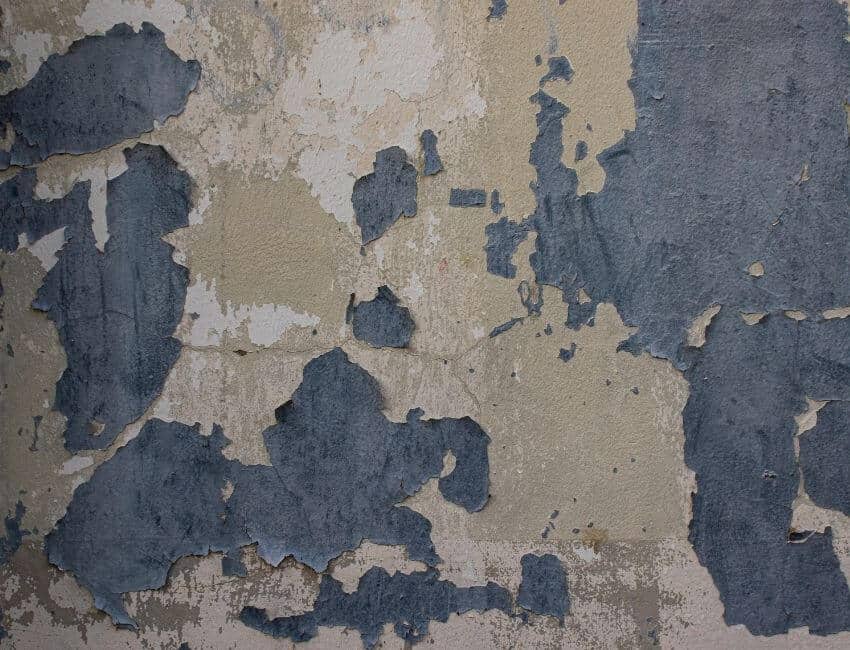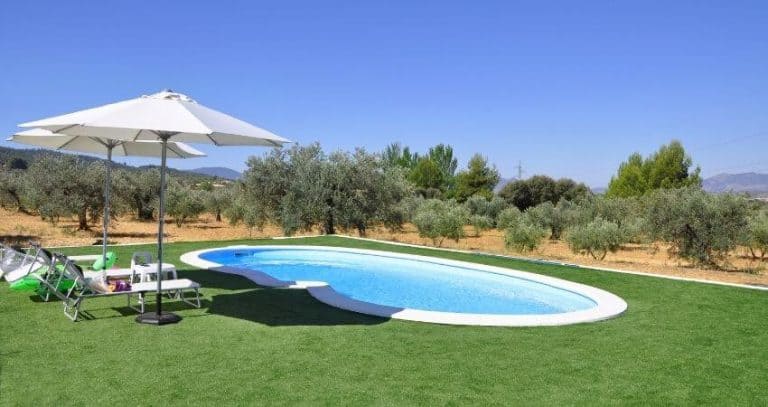Why Does Concrete Discolor? Reasons & Fixing Discolored Concrete

Surface appearance requirements for flatwork have greatly improved. The overall aesthetics of the concrete can be influenced by concrete discoloration. The uniform color, often to the point of proprietor dismiss, of concrete plate surfaces may be an aesthetic issue.
Inconsistency is the primary cause of concrete discoloration. This can be in dark blocks or mottled discoloration on flat surfaces, gross color variations on significant substantial areas due to take in the concrete mixture, or light discoloration patches caused by bloom.
The decoloration of cement cast in grade shapes or plates is typically a result of either change in the specific composition or construction. There appeared to be no discoloration of the single factor in most tests.
This is the article, where you will find all your answers to the reasons behind concrete. Not only that but also the prevention you may follow to stop concrete from discoloring. discoloration
Without any further a due, let’s get started;
Why Does Concrete Discolor? Types of Discoloration

If you want a concrete discoloration solution, you must know how many types of discoloration are there. There are a few different ways.
Blotchy: Concrete is a pore layer that is inherently more absorbent than others in some concrete environments. This leads to substantial blockages. Although the concrete color looks uniform initially, improper sealing will expose the surface in the future to discoloration, as water or deicing salts permeate the body.
Spotted: Whether the iron or mineral content is high, or if the water contains leaves or gravel, iron or rusty stains or black streaks on the concrete will be left behind. A heated pressure cleaner or acid rinse is the most effective method to prevent discoloration created by water.
Stripped: Concreter strip, also known as the closing strip, is a left cement strip for shrinkage and elastic shortening control; it can also be used for stress post-tension tendons.
Now, the symptoms, as mentioned above, are caused by many reasons. Below, we will discuss that.
- Inappropriate ratio of Materials
The cement and aggregate used in concrete are made up of several different materials. These materials can vary from batch to batch. Discoloration due to changes in cementitious materials or acceptable aggregate sources in subsequent batches in a placement sequence could occur but is generally rare and insignificant.
Concrete is generally lighter in color with a more excellent water-to-cement ratio of materials (w/cm). Inadequate use of admixtures, insufficient mixing time and improper finishing procedures could also lead to discoloration.
The concrete containing ground slag may have a yellowish to greenish color as cement material. This will usually disappear in a year. However, concrete that contains slag cement usually has lighter color.
- Caused by Efflorescence
Efflorescence is moisture, as it sometimes melts when flushed away with water. It looks like white powder or white crystals. It seemed even after the cleaning process and seems like a significant issue that never goes away. It’s going to reform quickly afterwards.
You can use the ER100 Foundation Armor to remove efflorescence with an efflorescence cleaner. This would remove efflorescence from the ground and inside the pores of the surface. The Armor SX5000 reduces moisture flow and stops up to 95% of water’s oxidation on the surface.
- Different Batch
Concrete is discolored due to variations in the combination between two separate batches. Concrete batches must balance the moisture, pacing and structure of the collections. What should be done to prevent discolored concrete is to keep the mixtures consistent and not hurry into positioning and drying.
Concrete is generally considered to be simply a combination of cement powder and water. Which isn’t incorrect, but isn’t exactly right, either. There are various styles and products of concrete mixtures, each containing additional amounts of gravel and sand. There are also cement substitutes, such as slag, which are different from standard concrete.
- Cement Color
Cement delivered to the ready-mix plant may change slightly in color depending on the burning or grinding conditions during cement production. A substantial color change, due to a shift in cement color. It may be noticeable if a cement substitution takes place during an ongoing placement. This adjusted mix is placed immediately next to concrete produced with cement from a different source.
- Inappropriate Finishing
The damp broom sweep method is regularly used to complete the top of the concrete. This method can harm the finishing of colored concrete.
This is a significant error for integrally colored concrete as it changes the texture of the soil. This is because the wet broom’s moisture varies with each stroke impacting the concrete’s various parts.
Let’s imagine drilling colored concrete for a moment. Do not stop shooting until the bleed water comes to the surface and evaporates. This induces entrapment which is one of the major causes of the flaw of the concrete floor. This will result in a weakened body, a shift in color and power.
- Amount of water
Method and schedule can influence the color of the concrete. In certain situations, the contractor may add water to the work site if the concrete proves to be complicated. If too much water is applied or not correctly combined, it may lead to blotchiness. Although blotchiness is unsightly on its own, it becomes much more of a concern when there is more than one splash.
- Environmental Effect
The combination of moderate temperatures relative humidity can result in a light-dark discoloration of the concrete surface. The rapid cooling of fresh concrete slows down the water intake of concrete.
In summer, pouring concrete usually doesn’t pose any difficulties, but winter pouring can be a matter of course. Winter continues to bring cooler temperatures and high humidity, which can slow down the process of stiffening.
As temperatures fall below 40°F, the chemical bond reinforces the concrete steadily. It could lead to a weaker concrete condition. If significant curing temperatures are below zero, the water in the concrete will freeze and spread, resulting in cracks.
Fixing Discolored Concrete: How to Fix Discolored Concrete
Problems can occur, and it will appear. That is common/. But we have to know the ways to fix them. Let’s learn about some easy methods that can be helpful enough to fix discolored concrete.
- Using Acid: Implementing powerful acid, such as hydrochloric or muriatic acid, removes the base of the cement paste. It helps the acid stain to react and to create its marbled color variations. A firm concrete board, rich in cement paste, is the fuel on which the right acid-based color thrives.

Just make sure the mixture is gentle and the treatment is appropriately handled in small doses. Otherwise, you can end up with stains or weakened concrete.
- Dying the floor: Concrete flooring can also be dyed to make it the shade you want. Based on the paint you pick, a dyed concrete floor can often be a little tricky because there’s not a lot of color variety to generate softness and movement.
The concrete floor could be dyed with a solid color in your kitchen, a water-based coloring agent. This will produce a dark, flawless finish that will be consistent throughout the entire floor.
- Flush and Scrub: Flushing is where the top of a concrete slab is sprayed with hot water and then enormously cleaned with a stiff brush. Homeowners should take this step before using chemical means is a quick flush and rinse.
This natural ventilation mechanism tends to uniformly disperse every form of moisture and mineral build-up on the concrete’s surface. You should replicate this process many times with minor bruises.
- Epoxy cover: Epoxy garage paint can be applied over a concrete stain, provided that they contribute to sustainable work is done. For example, as with many projects, epoxying the garage floor successfully mostly involves preparing the surface to apply epoxy.
Fresh concrete slabs should be wholly cured for 30-60 days before the coating is applied. If the seal was previously used on the asphalt, do not use epoxy.
Some Important FAQs
In this part, we have arranged some question and answer which may help you understand the above discussion much better.
- Can you put a clear coat over epoxy?
Clear epoxy coatings are typically added as an extra protective film on the epoxy or polyurethane floor’s surface. They may serve various purposes, such as scratch resistance, preservation of flakes and other aggregates, and general defense against dirt removal.
- How long does epoxy paint last on concrete?
The heavy-duty epoxy coating has a lifetime of 20-30 years depending on the factors that can damage your concrete and the epoxy itself. The next layer we’re going to worry about is a stamped concrete overlay.
- When does new concrete become grey?
This can arise in any of the preceding criteria. Environmental conditions, such as dry/humid weather, are not considered—trowel burning concrete, which will practically ‘fire’ the cement with a darker hue. In the end, excessive mixing of water and cement by using two separate batches for operation.
- What is stronger epoxy or polyurethane?
Generally, the polyurethane flooring is exceptionally resilient and elastic, while the epoxy flooring is thicker and more brittle. This makes polyurethane coatings more resistant to scratches and similar damage and is why urethane resin floors are often used in high traffic areas – such as multi-story car parks.
- How often should you water new concrete?
One of the most common means of curing concrete is to flush it down frequently with water five to 10 times a day, or as often as you can for the first seven days. Described as “moist curing,” this helps moisture to evaporate slowly in the concrete.
Final Words
Discolored concrete can ruin the look of your driveway, kitchen or garage, even walls. Naturally, your concrete wall or ground will become grey or white. But if you don’t take any action immediately, that would be a disappointing fact.
Rather than the concrete having a cold, industrial feel, add colors to create a vibrant modern design. The colors will be carried through to the walls and artwork in the space.
We hope this article will help you a lot to understand the fact of color discoloring. We have arranged the steps that can be followed all by yourself. Do follow them accordingly. It will be helpful. Good Luck!!

I’m a concrete contractor by trade and have been working in the industry for over 25 years now. I’ve seen (and done) it all when it comes to concrete, and I love sharing my knowledge and experiences with others who are interested in learning more about this amazing material. In my spare time, I enjoy spending time with my family, fishing, and watching NASCAR races.






